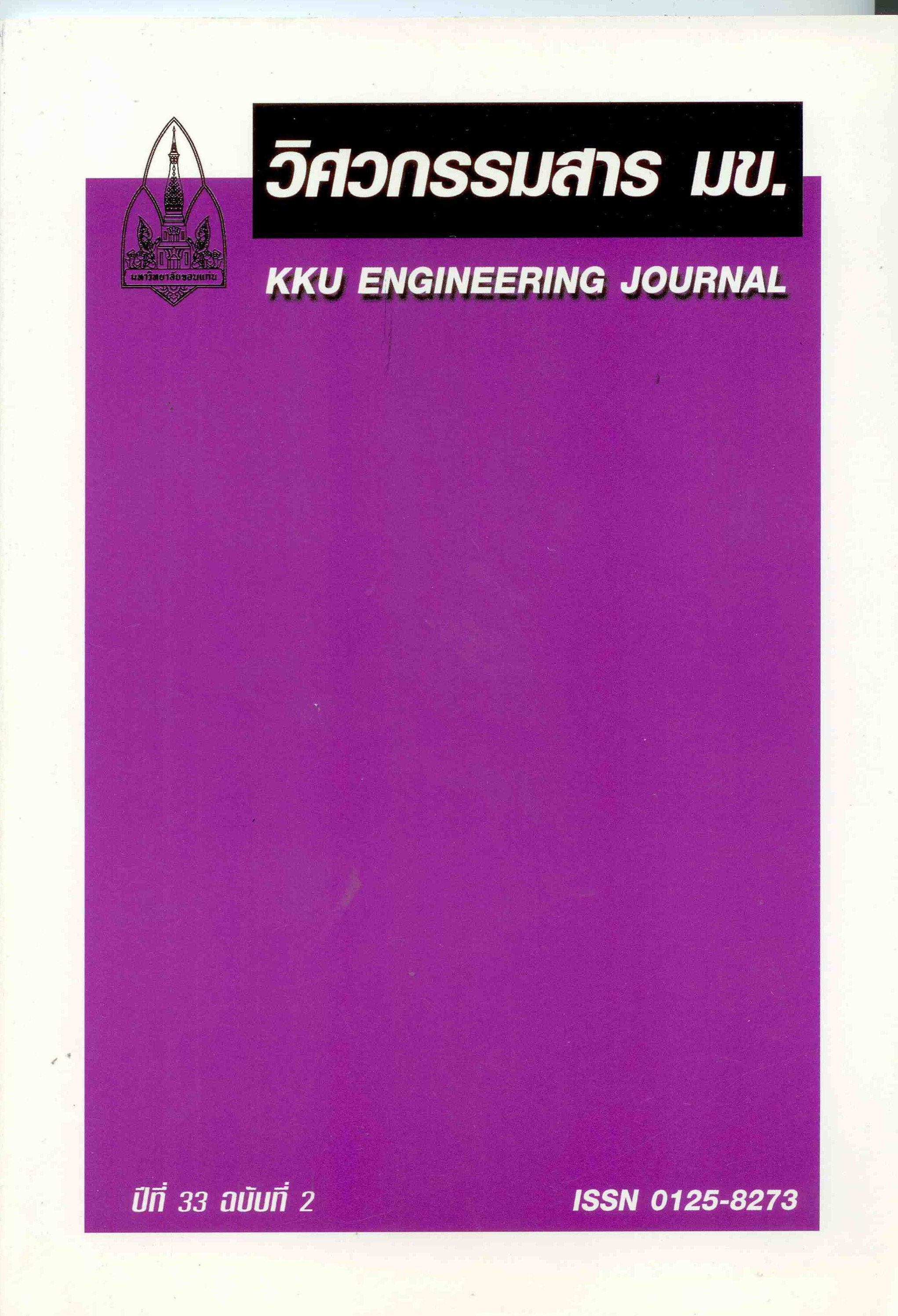Removal of Hexane waste in Waste from Pesticide Analysis by Wastewater Treatment Plant Sludge
Main Article Content
Abstract
This research was the study of treatment of hexane waste from pesticide analysis by using
acclimated sludge. The contaminants in hexane waste were analyzed. It was found that the waste
contained 98% hexane (equivalent to 646,800 mg/L hexane) and another 1.67% Dichloromethane
(DCM) (equivalent to 26,540 mg/L DCM). The potential of sludge taken from KKU treatment facility
and from activated sludge plant of Khon Kaen hospital in treating hexane waste were studied. The
results showed that microorganisms from Khon Kaen hospital could achieve 96.77% of hexane and
18.44% of Dichloromethane removal, while microorganisms from KKU treatment unit could do 95.09
% of hexane and 6.65 % of Dichloromethane removal, respectively. Therefore, sludge from Khon
Kaen hospital were used for the hexane treatment efficiency study. Seven sets of hexane waste with
concentrations of 400, 540, 810, 1079, 1618, 2158 and 2427 mg/L were used in the study. It was
found that at the hexane concentration of 810 mg/l, organisms could remove 74.69% of hexane and
70.37% of dichloromethane while at higher concentrations the efficiency decreased. These results
revealed that the hexane waste at higher concentration ( over 810 mg/l) could inhibit the growth of
organisms in the system.
acclimated sludge. The contaminants in hexane waste were analyzed. It was found that the waste
contained 98% hexane (equivalent to 646,800 mg/L hexane) and another 1.67% Dichloromethane
(DCM) (equivalent to 26,540 mg/L DCM). The potential of sludge taken from KKU treatment facility
and from activated sludge plant of Khon Kaen hospital in treating hexane waste were studied. The
results showed that microorganisms from Khon Kaen hospital could achieve 96.77% of hexane and
18.44% of Dichloromethane removal, while microorganisms from KKU treatment unit could do 95.09
% of hexane and 6.65 % of Dichloromethane removal, respectively. Therefore, sludge from Khon
Kaen hospital were used for the hexane treatment efficiency study. Seven sets of hexane waste with
concentrations of 400, 540, 810, 1079, 1618, 2158 and 2427 mg/L were used in the study. It was
found that at the hexane concentration of 810 mg/l, organisms could remove 74.69% of hexane and
70.37% of dichloromethane while at higher concentrations the efficiency decreased. These results
revealed that the hexane waste at higher concentration ( over 810 mg/l) could inhibit the growth of
organisms in the system.
Article Details
How to Cite
Kumkhinam, P., Mungkarndee, P., & Wirojanagud, W. (2013). Removal of Hexane waste in Waste from Pesticide Analysis by Wastewater Treatment Plant Sludge. Engineering and Applied Science Research, 33(2), 121–132. retrieved from https://ph01.tci-thaijo.org/index.php/easr/article/view/5985
Issue
Section
ORIGINAL RESEARCH
This work is licensed under a Creative Commons Attribution-NonCommercial-NoDerivatives 4.0 International License.



